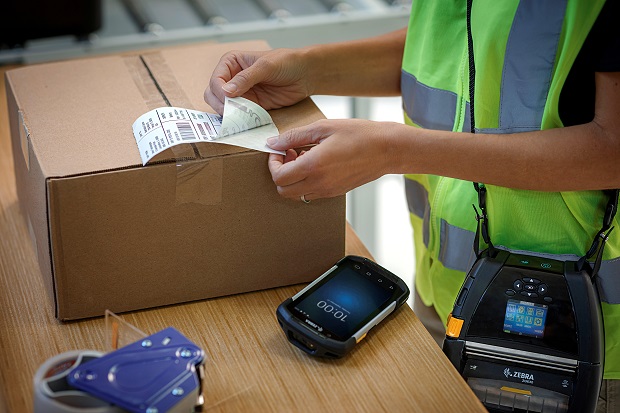
The community quarantine imposed on the entire Luzon in response to the Covid-19 pandemic has adversely affected the retail industry. With only groceries and pharmacies allowed to operate, only a certain number of customers are allowed in restaurants, the movement of people is limited, and consumption is restricted to just food and other necessities. This has resulted in a sales decline for other retail items, especially those from brick-and-mortar stores.
With their physical stores closed, retailers have realized that they must turn to e-commerce to reach their customers during this period. This is complemented by the fact that there are plenty of free delivery services available in the Philippines that support e-commerce.
However, that is just one part of the equation that retailers must tackle. While e-commerce may have created the demand for retailers, they must also ensure that there are enough supplies to meet this demand.
With the uncertainties lingering longer than expected, retailers and their suppliers are feeling the pressure to stockpile goods as a precautionary measure in order to avoid inventory shortages, which often lead to fulfillment delays, lost sales and lost customers, according to the Global Shopper Study 2020.
Retailers must therefore implement new warehousing workflow structures to increase fulfillment velocity. Marketing tactics such as next-day delivery perks and ‘back in stock’ emails fill up consumers’ inboxes each day, hoping to incentivize both impulse and repeat purchases. Buyers with an ‘I want it now’ mentality will expect retailers to ‘deliver now.’ So, if the quality or speed of service is lacking, they will simply go to competitors who can meet their demands.
To cope with this, retailers must modernize their warehouses to stay competitive. There are a few ways to accommodate all the different items that customers will want in the next few years and make it possible to deliver those goods with the velocity required to satisfy customers’ high standards:
Reconfiguring warehouses and boosting logistics systems
The Philippines saw an increase in food sales of up to 25% over the past five years, along with beverage and medicine this year, which fueled the demand for warehouse expansion. According to Fitch Solutions, although consumer spending is expected to slow to 6.7% this year compared to 9.8% last year, the overall spending is still expected to be trending upward.
Online shopping has pushed organizations to reconfigure their supply chains and find space either in or close to large cities. Some of the major contributors in warehousing growth are industrial and retail warehousing as well as e-commerce companies.
Reconfiguring warehouses and advancing the logistics system involves reassessing hardware, business flow and warehouse space to take into account specific customer needs. This will allow retailers to increase their shipping volumes and provide better service for their customers. The ongoing success of digital retail businesses such as Amazon, Shopee and Lazada and even smaller e-commerce startups is a testament to what can be achieved by expanding warehouse space.
Mobilizing employees with enterprise-grade mobile computers, augmented reality and more
Warehouse efficiency starts with employees – the backbone of any organization. Mobilizing operations staff with smart computer technology is the best place to start as it delivers actionable intelligence that workers need to carry out tasks quickly and accurately.
Today’s rugged enterprise-grade Android mobile computers have built-in barcode scanners, touchscreens, and key data capture. These sophisticated devices can also pool data from multiple sources such as sensors or RFID location systems and connect with advanced technologies such as augmented reality (AR) or automation systems to simplify complex processes. For example, an AR application on a mobile computer can tell a worker the precise location of an item on the pick list or where to put away items.
With the implementation of physical distancing resulting in limited workforce, technology is even more fundamental to providing quality customer service. As a bonus, most retailers are already using Android™ devices in their stores, and there will therefore be continuity in mobile platform management.
Moving from a ‘system of record’ to a ‘system of reality’
Retailers need enterprise-wide visibility to remain agile amid changing economic conditions and consumer expectations. They need visibility across all fulfillment channels to ensure they have what their customers want, when and how they want it.
This is where mobility solutions, track-and-trace systems and even Internet of Things (IoT)-powered automation come in. Together, these technologies enable retailers to ‘sense’ what is happening and what is stored within the warehouse and store in real-time. But records and reports alone do not deliver results. They inform actions, which deliver results.
That is why ‘modernization’ must be focused on creating a ‘system of reality’ that also enables retailers to ‘analyze’ the enterprise intelligence gathered via mobility, sensor and IoT solutions. Once retailers understand exactly what needs to be done, it is easy to direct mobile-enabled workers or even co-bots in the warehouse to carry out certain actions to better support in-store or online operations.
Capture your edge with hyperconnected warehouses
In the coming years, businesses will incorporate additional technology to the warehouse management system mostly powered by data to enhance user experience and increase satisfaction. Empowering warehouses with modern solutions serve to provide businesses with real-time information, thereby allowing management and their front-line workers to make business-critical decisions swiftly and decisively.
It is impossible to know exactly how to prepare for the year ahead, but one thing is clear: retailers who want to remain competitive, maintain customer loyalty and stay profitable in store and online must modernize their warehouses.
Retailers should embrace technology to sustain traditional operating principles and build a smarter operation that optimizes inventory and elevates the customer experience in today’s on-demand economy.
The author is Philippine country advisor for Zebra Technologies Asia Pacific




